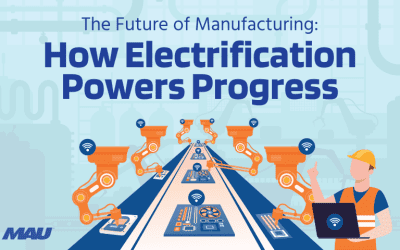Background
The manufacturing industry is undergoing significant changes, with workforce shortages and labor issues at the forefront. During the COVID-19 pandemic, an estimated 1.4 million manufacturing jobs were lost, adding to an already critical labor crisis1. The labor shortage is not confined to the manufacturing industry alone but is impacting every sector, with manufacturing being one of the most affected2.
Moreover, a study by Deloitte and The Manufacturing Institute predicts that the U.S. manufacturing sector could face a skills gap, resulting in 2.1 million unfilled jobs by 20303. The World Economic Forum’s Future of Jobs Report 2023 says that AI and machine learning specialists, data analysts and scientists, and digital transformation specialists are the most prominent emerging roles. The rapid technological advancements in the industry require a workforce with a higher skill level than ever before, contributing to this gap.
Another pressing concern for the industry is the retention of talent. Despite being a major employer, the manufacturing industry struggles with high turnover rates and challenges in attracting the right talent4. This has emphasized the need for innovative human resource strategies to attract and retain valuable talent.
As of September 2023, all industries except for non-durable goods manufacturing are experiencing a worker shortage5. This has put a spotlight on the need for innovative human resource strategies to attract and retain valuable talent.
Methodology
Despite the wealth of information available and the extensive media coverage, our clients and teams were still left with burning questions. What are the key elements that workers are really seeking? What influences their preferences and choices? How can we tailor a solution that satisfies both our clients’ needs and those of our applicants?
The path to crafting an effective solution began with one clear step: developing our own data to understand how employees’ perspectives on work are changing.
To understand our client’s needs and the market as a whole, MAU rolled out the second Mindset of the Market survey to our candidate database. We received 2,661 responses, and their perspective provides key insight into understanding the needs and mindset of the manufacturing workforce.
Note: Since a majority of MAU’s clients fall within the manufacturing industry, the distribution group was heavily skewed to a workforce that is familiar with and/or have been open to working within a manufacturing or industrial environment.
Download the full report by clicking below!



![MAU Header Mindset of the Market [Report]](https://mauwp-8df4f09c883d22d9-endpoint-staging.azureedge.net/blobmauwp102dd8a5adstaging/wp-content/uploads/2024/03/MAU-Header-Mindset-of-the-Market-Report.png)


